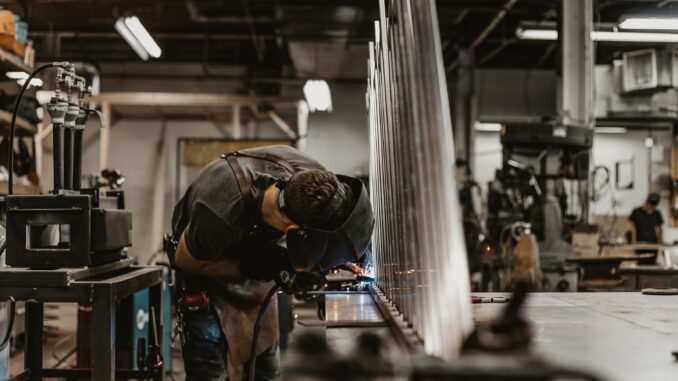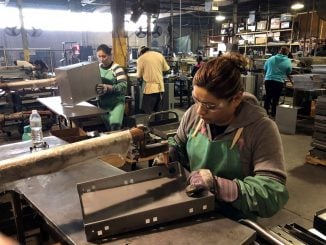
This is National Manufacturing Week, which is supposed to be a celebration of American industry and jobs.
North Carolina certainly has some cause for celebration, though recent closures of the Canton paper mill and the Mitchell Gold + Bob Williams furniture company show how tenuous manufacturing jobs can be — and how important it is to protect and expand them.
First, the good news. After years of NAFTA-related devastation, North Carolina’s overall manufacturing sector looks to have recovered somewhat. Data published by the National Association of Manufacturers shows our state’s manufacturing output hit $102 billion in 2021, up 21% since 2012.
That growth just barely outpaces the rate of inflation, but major economic development announcements suggest the positive trend will continue to improve. Pratt & Whitney will soon open its one-million-square-foot turbine airfoil production facility in Buncombe County. Toyota is constructing a battery manufacturing plant in Randolph County, a project that will total $5.9 billion when complete.
Other examples abound — Wolfspeed, Apple, VinFast, John Deere, Boom Supersonic, and more.
Add it all up and it’s clear why CNBC ranked North Carolina the top state for business two years in a row.
But the purpose of a manufacturing resurgence isn’t just state prestige or even economic growth alone — it’s jobs.
On this count, we still have a lot of ground to make up. Starting in the mid-1990s, North Carolina’s manufacturing employment went into freefall. From 1995 to 2022, manufacturing jobs fell from 830,000 to 475,000. That’s a 42% drop even as the state’s total population increased by 33%.
Viewed in this light, recent factory closures look like more of the same.
Two questions emerge from this picture: One, why do manufacturing jobs even matter if the state seems to be doing well without them? And two, what can be done to bring those jobs back?
To answer the first question, manufacturing jobs deserve attention because of where they are and who has them. Yes, on the whole North Carolina is doing very well. But nearly all of that success benefits the state’s urban centers.
Zoom out of Raleigh, Charlotte, and a few other cities, and a very different reality exists. Working-age adults are leaving. Job growth is stagnant. Poverty is higher, wages are lower, and it’s getting worse.
It’s these areas that the post-NAFTA economy hit the hardest, and it’s these areas that a manufacturing resurgence can most benefit.
Now to the second question: What can be done to bring manufacturing jobs back?
We said at the top that North Carolina is already moving in the right direction by attracting major manufacturing facilities outside of urban centers. For the past decade, state legislators have laid the groundwork for this trend through low taxes, reasonable regulations, and a pro-jobs agenda. We need to stay the course.
Next year’s state budget puts tens of millions of dollars towards preparing large tracts of land, called megasites, for other major employers. That will likely be money well spent: the Toyota, Wolfspeed, and VinFast plants are all located on megasites.
Outfitting community colleges and the UNC System to educate students affordably — especially adults — for modern manufacturer demands also makes good sense. The UNC System is undertaking an effort, called Project Kitty Hawk, with that aim in mind.
It isn’t enough that manufacturing jobs are made available for North Carolinians. These jobs require an upskilled and reskilled workforce as well. At the federal level, the Committee on Education and the Workforce is hard at work broadening the talent pipeline from postsecondary education opportunities to in-demand, good paying careers, which are available in manufacturing.
The Committee has two main legislative priorities — the Workforce Innovation and Opportunity Act and workforce, or short-term, PELL grants — which will help outfit the workforce with skills demanded by manufacturers. By cutting bureaucracy, ensuring more dollars go to skills development programs, and letting employers take the lead, we can ensure the workforce system is, well, working.
All of these efforts share a common goal: creating an environment that delivers good-paying jobs to rural areas, anchored by durable employers who won’t pack up and move. Manufacturing and industry checked those boxes for decades, and they can do so again.
Deanna Ballard is a former state senator and 2024 Republican primary candidate for lieutenant governor. Virginia Foxx represents North Carolina’s 5th Congressional District is the Chairwoman of the Education and Workforce Committee.



